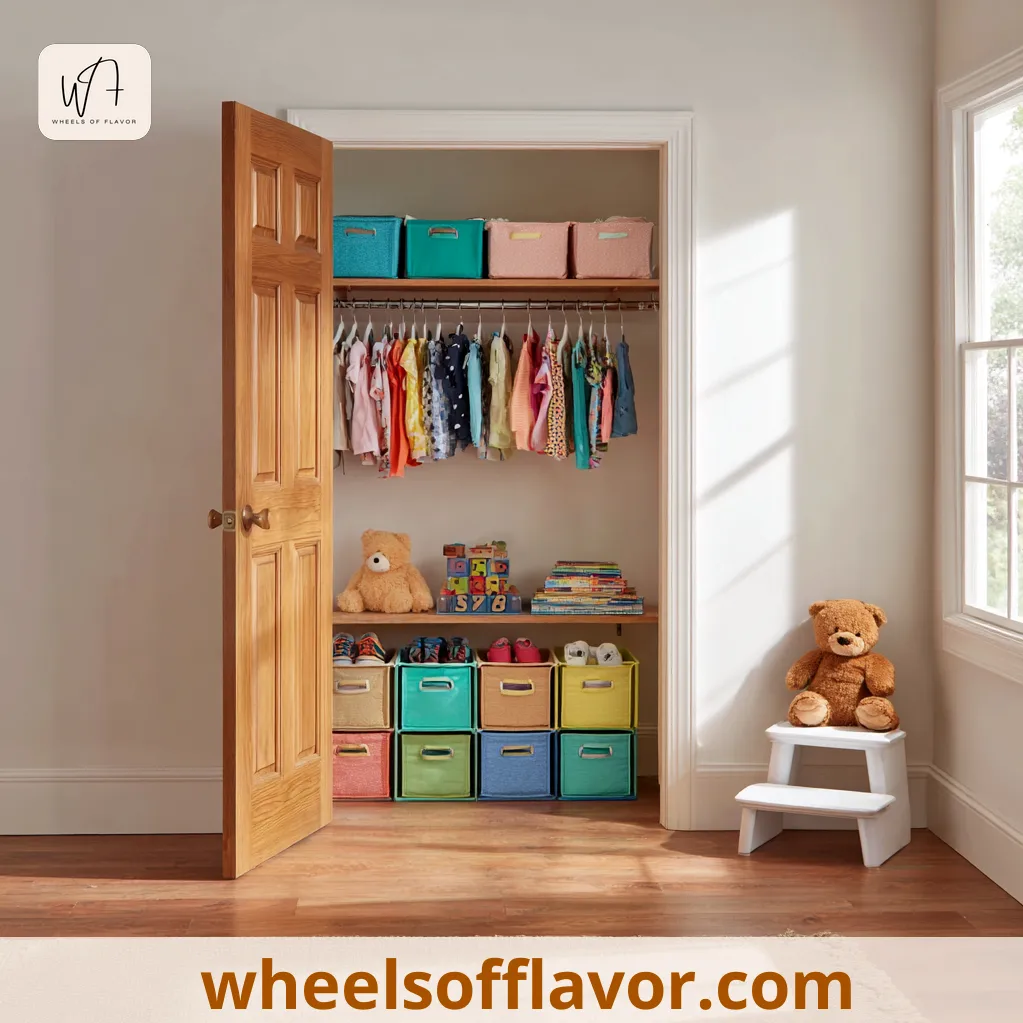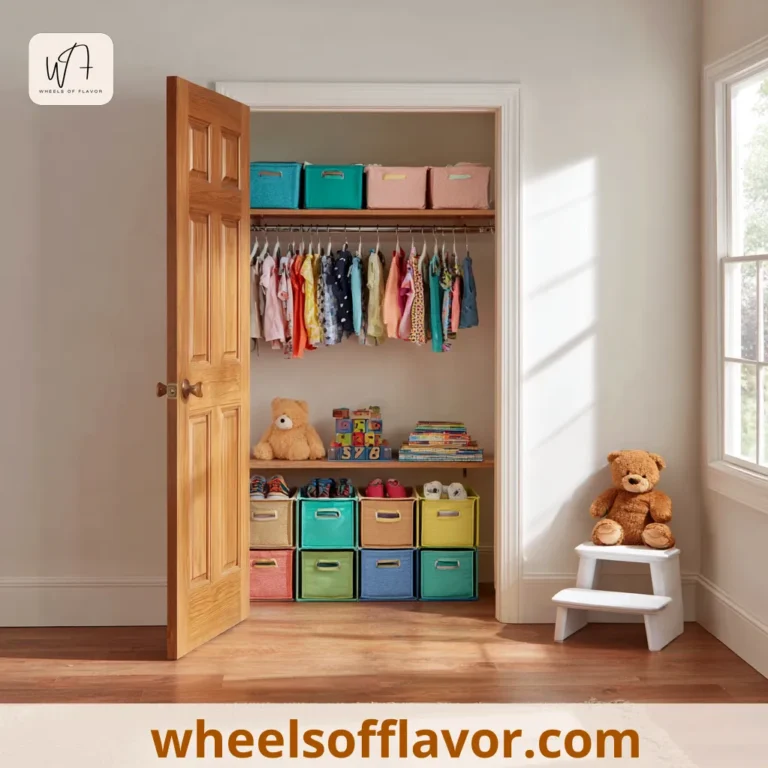
If you’ve ever stepped into a child’s room only to be greeted by a chaotic explosion of clothes, toys, and clutter, you know the struggle is real. Kids closets organization isn’t just about tidiness—it’s a game-changer for family harmony and daily routines. When a closet is well-organized, mornings become smoother, with less time spent searching for that favorite shirt or missing shoe. It reduces stress for both parents and children, teaching valuable life skills like responsibility and order. Plus, an organized space can make a room feel larger and more inviting, fostering a sense of calm in what’s often a busy household hub. In this article, we’ll dive into practical strategies to transform that mess into a functional, kid-friendly zone. From simple storage hacks to involving your little ones in the process, we’ll cover everything to make organization stick. Remember, a tidy closet isn’t about perfection; it’s about creating a system that works for your family’s unique needs. For more inspiration on home decor that blends style and function, check out this guide from The Spruce on organizing small spaces.
Planning Your Kids Closets Organization System
Before diving into a reorganization spree, take time to plan your kids closets organization system. Start by assessing the current state: empty the closet completely and sort items into categories like clothes, shoes, toys, and accessories. This helps you see what you're working with and identify what's no longer needed. Measure the closet dimensions to choose storage solutions that fit perfectly, such as adjustable shelves or hanging rods at child-friendly heights. Involve your kids in this stage—ask them what they use most and where they'd like things stored. This not only makes the system more effective but also encourages ownership. Next, set clear goals: aim for a layout that's easy for kids to maintain, with frequently used items within reach. For instance, place everyday clothes on lower rods and reserve higher shelves for seasonal storage. Use labeled bins or color-coded hangers to simplify sorting. Planning also means considering safety; avoid heavy items on top shelves unless secured, and opt for soft-close drawers to prevent pinched fingers. By thinking it through, you'll create a kids closets organization setup that reduces clutter and boosts independence. For budget-friendly ideas, explore DIY projects on sites like https://wheelsoflavor.com/diy-kids-storage-hacks.
Essential Tools for Kids Closets Organization
Having the right tools is key to successful kids closets organization. Start with adjustable shelving units, which can grow with your child and accommodate changing needs. Look for sturdy, non-toxic materials like solid wood or metal that withstand daily use. Hanging organizers with multiple compartments are perfect for separating clothes by type, such as shirts, pants, and pajamas, making it easy for kids to find what they need. Use clear bins or baskets with labels for shoes, toys, or accessories; this visual aid helps younger children identify items without rummaging. Don't forget child-sized hangers—they're safer and take up less space, allowing more room in the closet. For smaller items, consider drawer dividers or stackable cubes that fit neatly on shelves. If floor space is tight, over-the-door organizers can hold shoes or accessories without crowding the interior. Tools like step stools or low hooks encourage kids to reach higher spots safely, promoting self-sufficiency. When selecting these items, prioritize durability and ease of use; for example, opt for bins with handles for easy carrying. By investing in these essentials, you'll build a kids closets organization system that's both functional and fun, turning chaos into order in no time.
Maintaining Kids Closets Organization Long-Term
Once you've set up an organized kids closet, the real challenge is keeping it that way. Maintenance is crucial for long-term success in kids closets organization. Start by establishing simple routines, like a weekly 'closet check' where you and your child tidy up together. This can be a fun activity—set a timer for 10 minutes and make it a game to put things back in their places. Encourage kids to participate by using rewards or charts to track their efforts; for instance, a star for every day they hang up their clothes. Regularly purge items that are outgrown or unused; schedule seasonal clean-outs to donate or store away clothes that no longer fit. Teach children the 'one in, one out' rule: when a new item comes in, an old one goes out, preventing accumulation. Use visual reminders, like pictures on bins for pre-readers, to reinforce where things belong. Flexibility is key—as your child grows, adjust the system to meet new needs, such as adding more hanging space for longer clothes. Consistency from parents helps embed these habits; lead by example and praise efforts to build confidence. With these strategies, kids closets organization becomes a sustainable part of your family life, reducing stress and fostering independence over time.
Conclusion
In wrapping up, kids closets organization is more than just a tidy space—it's a foundation for smoother mornings, reduced stress, and valuable life lessons in responsibility. By planning a system that fits your child's needs, using the right tools, and maintaining it with consistent routines, you can transform chaos into calm. Remember, the goal isn't perfection but functionality that grows with your family. As you move forward, consider incorporating smart storage trends, like modular units or eco-friendly materials, to keep the system adaptable. Imagine a future where your kids confidently manage their own spaces, thanks to the habits built today. Start small, involve them in the process, and watch as organization becomes a natural part of your home life. For more tips on creating harmonious living spaces, dive into our other articles and keep evolving your approach to family organization.
Frequently Asked Questions
Q: How often should I reorganize my child's closet?
It's best to do a quick tidy-up weekly, such as during a family cleaning session, and a full reorganization every 3–6 months. This frequency allows you to adjust for growth spurts, seasonal changes, and new belongings. For example, in spring and fall, swap out clothes for the upcoming season to keep the closet clutter-free. Regular checks help maintain the kids closets organization system without overwhelming efforts.
Q: What are the best storage solutions for small kids closets?
For small spaces, maximize vertical storage with adjustable shelves and over-the-door organizers. Use stackable bins, hanging organizers with multiple pockets, and low hooks for easy access. Opt for slim hangers and under-bed storage boxes to free up closet room. These solutions make kids closets organization efficient without sacrificing functionality, even in tight areas.
Q: How can I get my kids involved in closet organization?
Make it fun by turning tidying into a game, using colorful bins or labels with pictures. Give them choices, like picking their favorite hangers or deciding where to store toys. Set up a reward system for consistent efforts, and involve them in periodic clean-outs to donate old items. This hands-on approach builds responsibility and makes kids closets organization a collaborative family activity.

